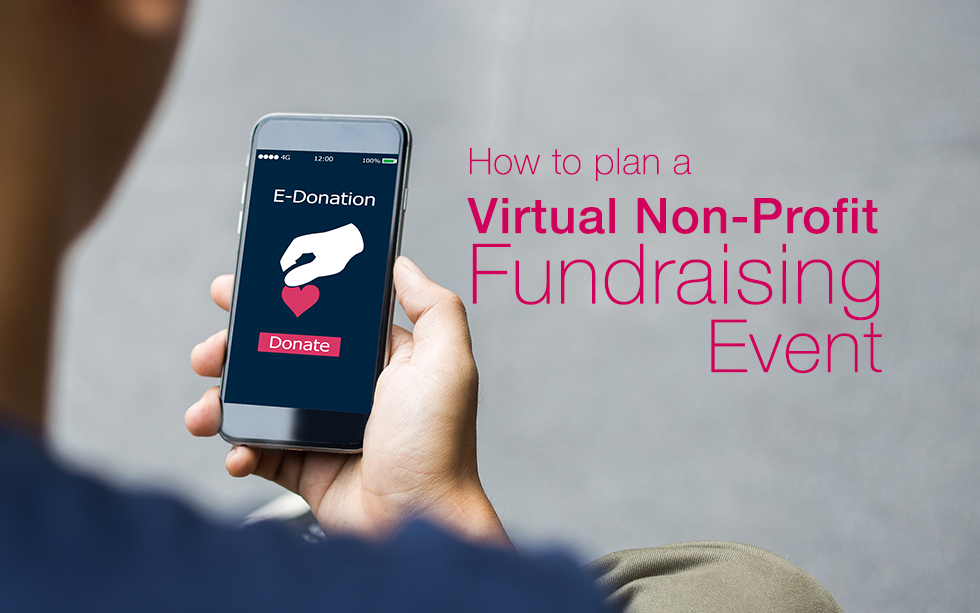How to Plan a Virtual Non-Profit Fundraising Event
The COVID-19 pandemic has caused massive disruption to calendars. Birthday celebrations have been replaced with drive-by parades, social gatherings now take place via Zoom happy hours, and many community-based events – including fundraisers – have been canceled entirely.
But it doesn’t have to be that way for non-profit fundraising events.
Just as other events and gatherings have moved to new virtual formats, so too can fundraisers.
Virtual fundraising initiatives keep supporters engaged, and provide a stable foundation of incoming revenue necessary to fund operations and raise money for the non-profit’s mission – if planned strategically.
To understand how to successfully and strategically plan a virtual non-profit fundraising event, we talked to Lindsay Landman, founder of Beyond the Benefit and a widely respected event designer who has helped non-profits in every sector raise millions of dollars to support their missions. Lindsay’s recent projects include helping Well Beings Charity convert their annual Hamptons summer party to a star-studded virtual benefit to coaching one of the nation’s largest and oldest sororities on their virtual new member recruitment at 22 universities nationwide.
She is also the instructor for ELI’s newest online course: Virtual Fundraising Event Management Certificate, which kicks-off on August 18.
Here’s a planning primer to help you get started.
Start with the same fundamentals
In many ways, getting started with a virtual fundraiser is like planning any other event.
You start by establishing your goals, organizing your team, defining your budget, and creating a master event plan. Then, set up the logistics, promote your event, and host it.
However, even if you may have much of the above defined from past in-person events, remember this is the time to update your goals and rethink plans to fit the virtual environment.
Lindsay suggests asking these questions as you make the shift:
- How can we use this transition to virtual as an opportunity to grow and change? (In other words, don’t just do the same thing that’s always been done.)
- What elements from our live events will translate best to a virtual environment?
- How can we create meaningful connections with our guests through the screen?
Define the technology platform
With a virtual fundraiser, there are many more moving technology pieces to address early in the planning process, including the video streaming and broadcast platform, attendee interface and engagement programs, and tools to facilitate donations or an auction process.
Lindsay shares it isn’t a good idea to transition to virtual if you aren’t willing to adapt to the new medium. “This moment in time requires change and flexibility — trying to replicate what you did live on a screen doesn’t serve your organization. Chart a new path by embracing all the tools and technologies available in the virtual space.”
Don’t forget that virtual event technology requires additional support roles too – such as an interface designer, programmer, technical producer, or run-of-show director.
To ensure a successful online event, button-up who will handle all of these roles leading up to and during the virtual event.
Plan an updated fundraising strategy
According to Lindsay, one potential pitfall is keeping the same fundraising structure as you have for live events. “You can’t sell ‘tickets and tables’ for a virtual gala – you’re selling sponsorships, experiences, screen time, and access.”
That means rethinking all aspects of your fundraising strategy, including how you accept donations, giving levels, and even the sponsor strategy.
For example, instead of limiting donations to written checks or cash payments, virtual fundraisers are more successful when there are opportunities to take donations through debit/credit cards, electronic checks, and other mobile-friendly tools like Venmo, Apple, or Google Pay. The easier it is to give, the more people will do it, and the more successful the virtual fundraiser will be!
Set the stage for success
Lindsay offers another caution: don’t focus so much on the program that you forget to focus on your guest experience.
There are several best practices associated with a virtual fundraiser, including:
- Have a plan to encourage interactivity for guests throughout the entire event
- Create moments of surprise and delight to build anticipation and up-level the event’s energy
- Conduct a full rehearsal from start to finish
- Pre-record where possible to use as a back-up in case there is a problem with any of the technology
These four steps are just a starting point for planning a successful virtual fundraiser – there are many other important considerations and decisions. As Lindsay explains, virtual galas and benefits are literally changing and evolving by the day. “But by understanding the fundamentals of planning these events, you can build the confidence necessary to add in the creativity and innovation that guests increasingly demand, and that will help you raise the most money for your cause.”
Gain the knowledge and learn more about making a successful transition live fundraising events to virtual environments by joining our upcoming Virtual Fundraising Event Management Certificate course. Registration now open!


